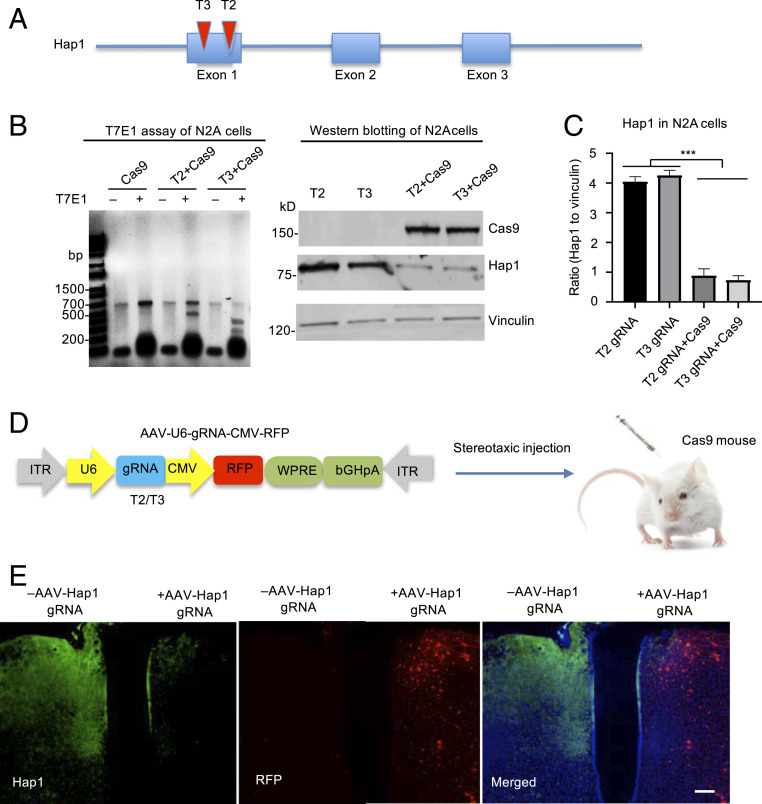Fig. 1.
Efficient knocking down Hap1 via CRISPR/Cas9. (A) Two Hap1 gRNAs (T2 and T3) were designed to target exon1 of the mouse Hap1 gene. (B) T7E1 assays and Western blotting verified that CRISPR/Cas9 targeting could cause mutations in the Hap1 gene (Left) and markedly reduce the expression of Hap1 in transfected N2a cells (Right). (C) Densitometric ratios of Hap1 to vinculin on Western blots in B. The data are presented as mean ± SEM (n = 3), ***P < 0.001. (D) Hap1 gRNAs are expressed by AAV vector that also expresses RFP under the control of the human cytomegalovirus (CMV) promoter. The packaged AAV9 viruses were stereotaxically injected into the brain of Cas9-transgenic mice. (E) Double-immunofluorescent staining showing that expression of AAV-Hap1 gRNA and RFP (red) led to a marked reduction of Hap1 (green). The merged image also shows nuclear staining (blue). (Scale bar, 100 μm.)

